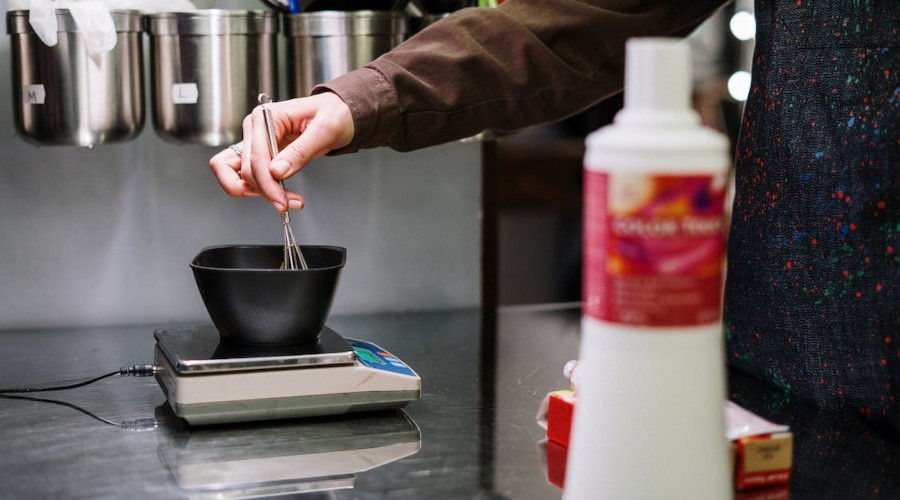In an era where being natural and organic is not just a preference but a lifestyle choice, the beauty industry is seeing a significant shift. No longer are the days when applying chemicals to your hair was the only way to achieve that dream shade.
Natural hair dyes have entered the beauty scene, promising the vibrancy and longevity of chemical dyes without the side effects. Let’s dive into natural hair colors and see how they might be the game-changer in hair care for the readers of did.lv.

The basic difference: Natural vs. chemical hair dyes
In a world where we are inundated with choices at every turn, the one between natural and chemical hair dyes stands out prominently. How we color our locks tells a lot about our priorities— longevity and variety or hair health and eco-friendliness.
Delving deeper into these two worlds, we’ll uncover the core distinctions that set them apart, offering insights that might change your next salon visit.
Chemical hair dyes often contain ammonia, peroxide, and other chemicals that open the hair cuticle to deposit color. While they offer a plethora of shades and last longer, they might damage the hair over time.
On the other hand, natural hair dyes are made primarily from plants and herbs, which coat the hair shaft, adding color without altering its structure. These dyes might not last as long as chemical ones but are gentler on the hair.

Ingredients of natural hair dyes
As the saying goes, “You are what you eat,” and the same principle applies to our hair. The ingredients that go into our hair products, especially dyes, play a pivotal role in determining our tresses’ health, shine, and vibrancy.
Natural hair dyes, with their botanical roots (pun intended), offer a cornucopia of natural ingredients. Let’s unpack the magic behind these nature-derived tints and understand the essence of each ingredient.
- Henna: A popular choice for imparting a reddish-brown tint. Henna not only colors but also conditions the hair.
- Indigo: Often used with henna, it can create shades from brown to black.
- Chamomile: Known to lighten hair, giving it golden highlights.
- Beet and carrot juice: This can give hair a reddish tint.
Interestingly, some herbs against hair loss can also act as natural hair dyes!
Pros and cons of natural hair dyes
Despite their myriad benefits, every rose has its thorn, and natural hair dyes come with their own challenges. In this age of informed choices, weighing the good against the not-so-good is imperative. By understanding the advantages and limitations of natural hair colors, you’ll be in a better position to decide if they align with your hair goals and lifestyle choices.
Pros:
- Gentler on hair: Natural dyes condition and nourish the hair.
- Eco-friendly: They are biodegradable and less polluting.
- Hypoallergenic: Rarely causes allergies or irritations.
Cons:
- Less variety of shades: Limited to natural hues.
- Shorter longevity: The color might fade quicker than chemical dyes.
- Inconsistent results: Results might vary based on hair type and initial color.
Trends in natural hair dyeing
Fashion and beauty trends are ever-evolving, reflecting the zeitgeist of an era. With their eco-centric appeal, natural hair dyes are making waves in the contemporary beauty scene. But what exactly are the trends that have beauty aficionados and influencers raving?
Let’s take a fashionable journey into natural hair dyeing trends, revealing what’s hot and not in botanical hair coloring.
- Going gray naturally: With more people embracing their natural gray, some use natural dyes like black tea to transition gradually.
- Multicolored natural highlights: Combining different natural dyes to create multicolored effects, like using lemon juice for blonde streaks amid henna-red hair.
Remember, hair health goes beyond just coloring. Regular haircutting can also contribute to healthy and lustrous hair.
Conclusion
Embracing natural hair dyes can be a holistic approach to beauty. By opting for nature’s palette, you’re choosing a path that respects your hair’s health and the environment. The hues might be limited, and the longevity may be shorter. Still, the benefits to hair health and the environment make it a worthy choice.
After all, at did.lv, we believe in choices that make us look good and feel good about the impact we’re leaving behind. Whether aiming for a bold transformation or subtle highlights, nature has covered you. Let your hair tell a story, not just of color but of conscious choices.

Labien,
mani sauc Katrīna, un esmu apņēmības pilna palīdzēt uzlabot situāciju pasaulē. Tikai visi kopā mēs spēsim mainīt lietas, tādēļ, ja tev šķiet šīs tēmas interesantas, apmeklē šo blogu regulāri.

